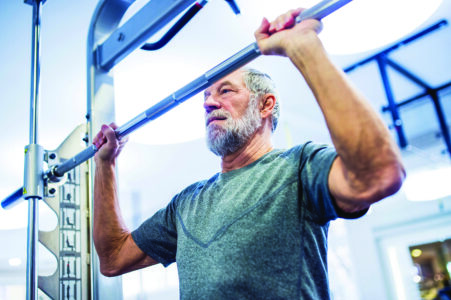Signs of overexertion seniors can learn to recognize
- Photo Illustration

Photo Illustration
Exercise is a vital component of a healthy lifestyle. When paired with a nutritious diet, routine physical activity promotes long-term health and improves quality of life.
The benefits of a physically active lifestyle are undeniable, but it’s important to guard against overexertion. That’s particularly important for seniors, as aging produces bodily changes that pose unique challenges to older adults who are physically active. According to Easy Exercising, a Queensland-based organization that specializes in assisting seniors with exercise, aging bodies experience decreased physiological resilience over time, which makes them less adaptable to stress. That reality underscores the need for seniors to recognize the signs of overexertion, a recognition that can help seniors reduce their risk for illness and injury.
¯ Dizziness: The online medical resource Healthline notes a number of things can cause post-workout dizziness, including overexertion. Seniors taking group classes may be especially vulnerable to overexertion-related dizziness, as they may be trying to keep up with classmates and pushing themselves without even realizing it. Dizziness during or after a workout should not be taken lightly, and seniors should sit down immediately, catch their breath and drink water as their heart rate slows. Seniors who become dizzy while taking a group class should alert their teacher immediately.
¯ Soreness: Soreness is another sign of overexertion, but seniors should recognize this symptom can be a little harder to categorize. Some soreness is common after exercise. After all, a good workout challenges the body. However, soreness that manifests as tightness, sharp pain or a throbbing or burning sensation is likely a sign of overexertion. When such symptoms present, stop exercising immediately and emphasize rest. After sufficient rest, make sure a return to exercise is less taxing (i.e., lower intensity with cardiovascular exercise and less weight with strength training).
¯ Nausea: A workout should never make anyone nauseous, regardless of their age. Healthline notes feeling nauseated or vomiting after a workout are a sign that a change in routine is necessary. As noted, aging bodies experience diminished resilience over time, so feeling nauseated is a sign that a body was pushed too far during a workout. Seniors who push their bodies so far during a workout that they are feeling nauseated also are increasing their risk for injury and muscle and joint strain. Take the first sign of nausea as a warning that a workout has gone too far, and make the necessary adjustments to avoid a repeat episode.
¯ Abdominal pain: The Maryland Pain & Wellness Center notes overexertion during physical activity can cause muscle strain and spasms that manifest as abdominal pain. Rest is necessary when such symptoms present, and a return to exercise should be marked by a lower-intensity workout.
Seniors have much to gain from exercising regularly. But it’s vital that seniors avoid overexertion, which can lead to a host of unpleasant and potentially harmful side effects.

